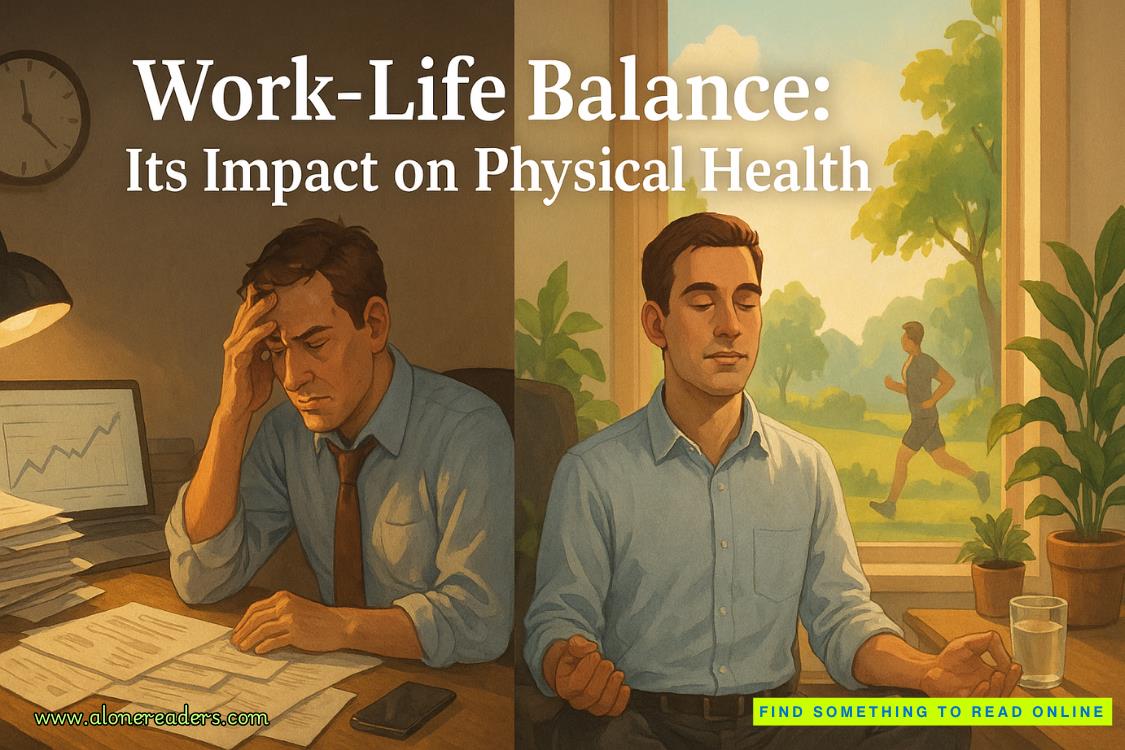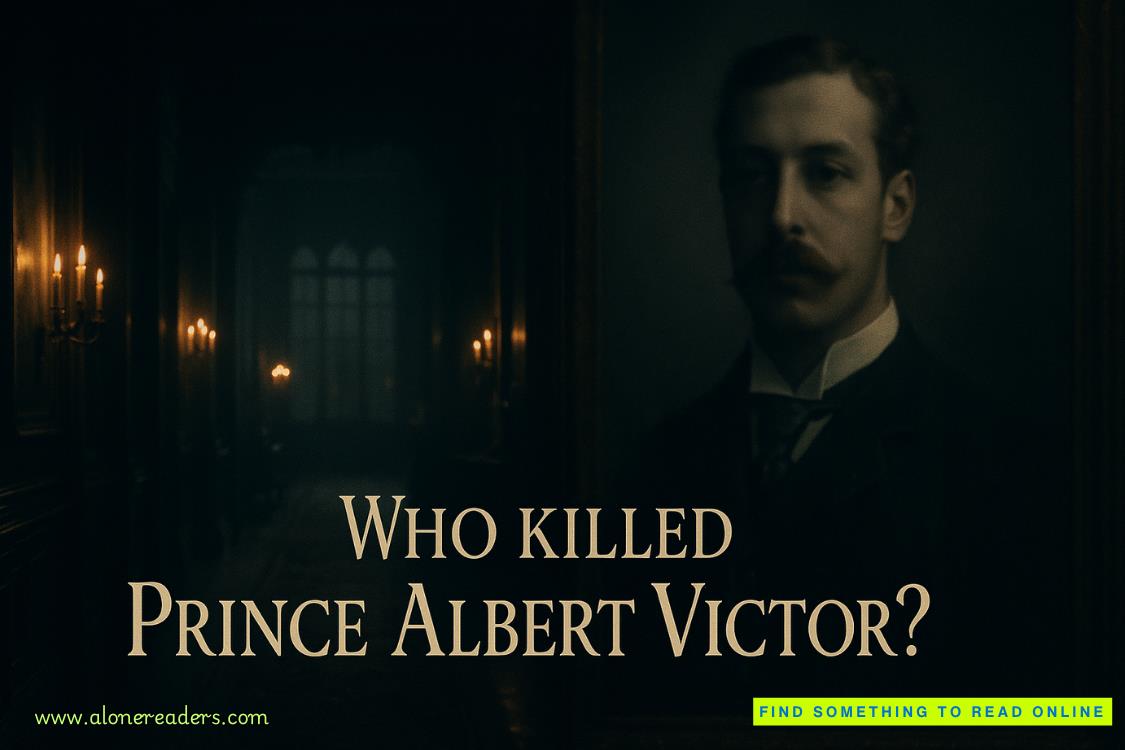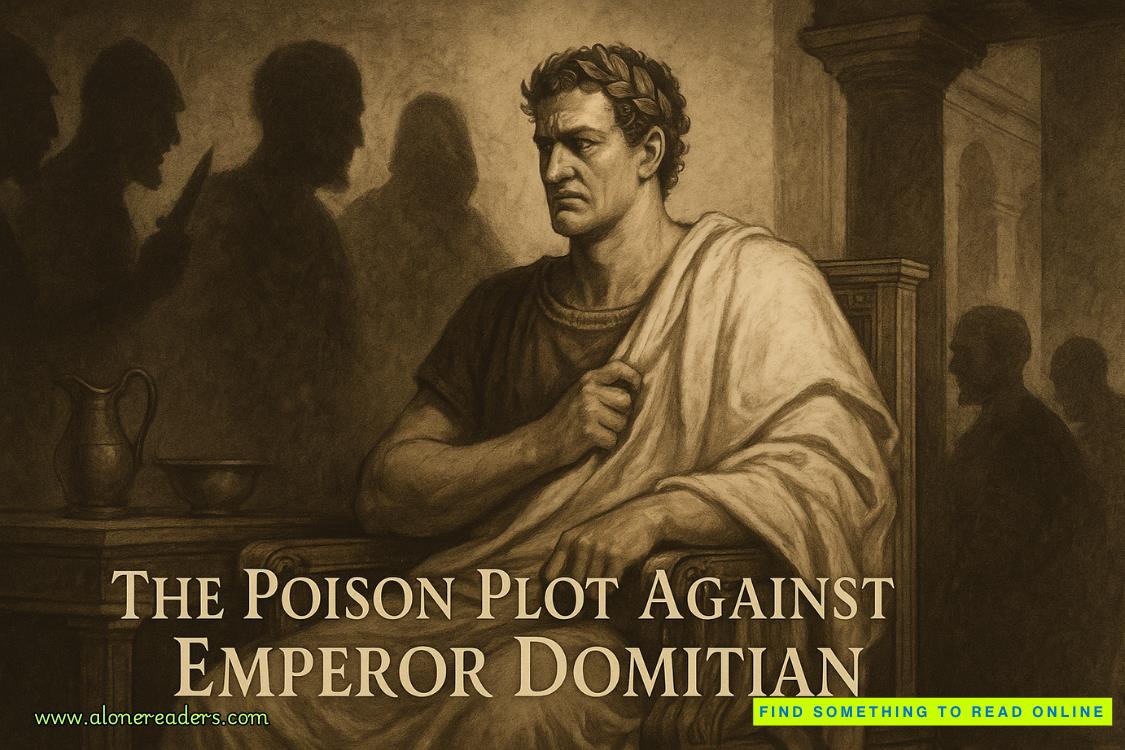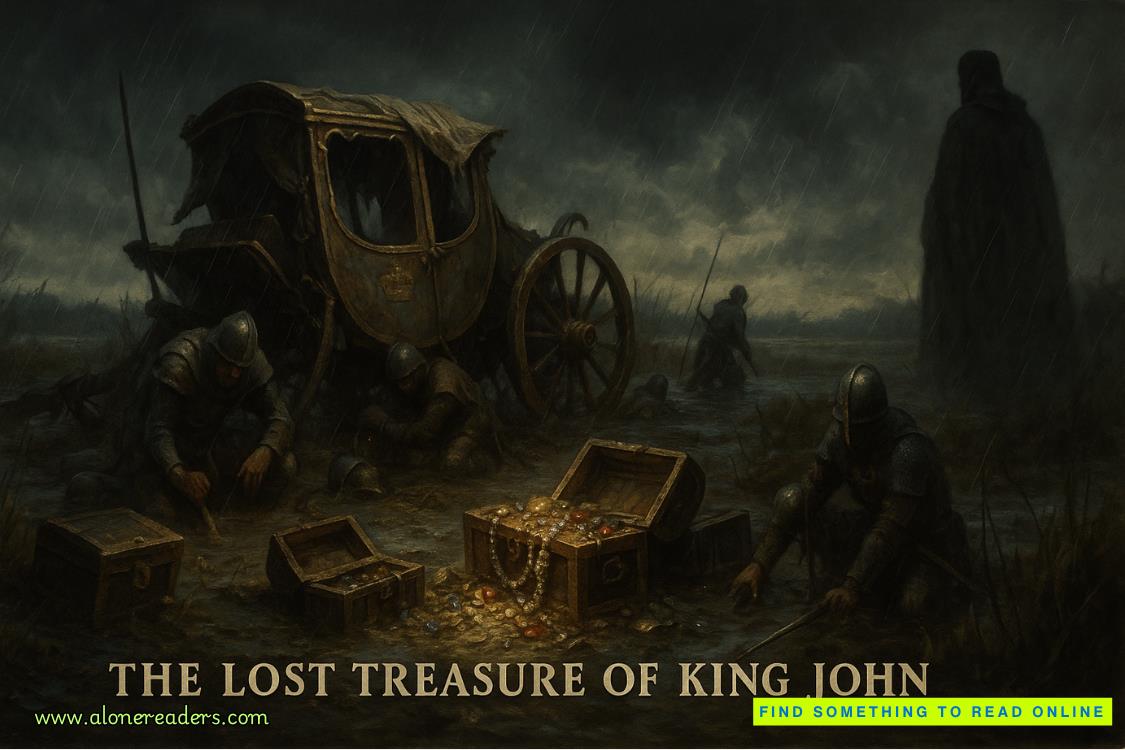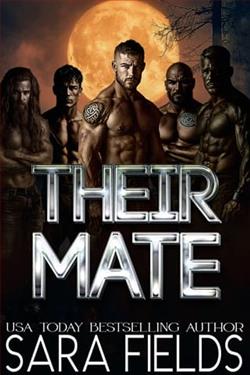Page 33 of House of Glass
Alex on his yacht in Cannes.
In April 1961, Picasso was eighty and a newlywed, having married Jacqueline the previous month. Jacqueline was devoted to
her new husband, sorting through his correspondence, attending to the daily chores, fending off the endless stream of visitors and collectors, dealing with the lawyers, and generally arranging their lives.[19] After Picasso died in 1973, the degree to which Jacqueline controlled Picasso’s life would become a somewhat controversial subject, when she stopped his children from a previous relationship, Paloma and Claude, from attending their father’s funeral, and was later accused of stealing their inheritance. But Picasso was besotted by her, and at the very least grateful for her attentiveness: he made four hundred portraits of her, more than of any other single person, and for the last seventeen years of his life she was the only woman the former womaniser painted.
Almost certainly, Alex’s friendship with Jacqueline helped to get him his long sought-for invitation to meet Picasso. But the artist guarded his time and privacy fiercely, and he was certainly not opening his doors to every art world hanger-on who Jacqueline had met at Madoura. So there had been something about Alex’s letter that ‘captured Picasso’s attention’, Jacqueline explained, and it turned out that had less to do with art and more to do with Alex. Picasso had lived in Paris during the occupation and was fascinated by Alex’s story of fighting in the Foreign Legion alongside Spanish Republicans in exile, as Picasso was himself a Spaniard essentially in exile. (Franco was then still in power in Spain, and Picasso was seen as an enemy.) And so he summoned him to Cannes, and that is when Alex first met Picasso at Villa La Californie.
As much as Alex saw himself in Picasso, Picasso apparently saw himself in Alex. When he entered the sitting room Picasso stood up, walked towards Alex and – reaching up because, for once, Alex was the tallest man in the room – jabbed a finger into his chest: ‘T’es juif, comme moi!’ Picasso barked.
Alex assumed at the time that Picasso was speaking metaphorically, that he thought of himself as an outcast and a fighter, two qualities associated with Jewish Resistance fighters, and that Picasso, rightly, saw in Alex. The two men talked for about half an hour. It doesn’t sound, however, like Alex talked that much. Instead he listened to Picasso and didn’t explain what, exactly, it was that he wanted from him after all this time: ‘I did not dare distract from our precious moments together to talk to you about something that is very dear to my heart,’ he wrote to him after the visit. In fact, Alex wanted Picasso to design a scarf for a collection Dior was putting together that year; Dior had asked Alex’s assistance in contacting Picasso, and Alex realised that, if he pulled this off, it would make him look like a big player in both the fashion and art worlds.
I couldn’t find any evidence that this scarf project ever happened. But Alex got something else from Picasso even he hadn’t dared to hope for: friendship. Picasso took a genuine shine to him and they entered into an extraordinarily regular correspondence. In the National Archives in Paris there are sixty-two letters from Alex to Picasso, far more than from almost any other business associate. They are all addressed to both Picasso – who Alex always refers to as ‘grand maître’ – and Jacqueline, as was common with all of Picasso’s correspondence, such was the degree of Jacqueline’s involvement in her husband’s business affairs. But they are also written with a fond familiarity unusual in both men. Among the various business discussions – Alex asking Picasso to authenticate a painting, Alex inviting him to a party at his home – are chummy postcards from Alex’s trips to the United States, as well as a joint postcard, sent from the south of France, signed by both Alex and Maurice Chevalier, in which they tell him they’ve been speaking of him fondly.
Alex with Picasso.
Picasso occasionally asked Alex to check on an exhibition of his work for him, especially in Spain, as the artist was still ostensibly exiled from his home country. In April 1962, Alex went to Barcelona, as Picasso had recently donated a huge number of works to the Aguilar Palace, and he wanted to know they were hung and received properly. Alex sent back a typically effusive telegram: ‘Everyone from and around Barcelona is embracing your wonderful present. Even the sun shone on the party.’ Some of Alex’s artist friends were understandably jealous of how clearly starstruck he was by Picasso. Chagall, who had known Alex for almost forty years, would make pointed comments about his constant name dropping and ask, ‘So tell me, how’s your Spanish friend?’ But Alex couldn’t be teased out of bragging about Picasso.
Shortly after returning from Barcelona, Alex’s loyalty paid off. He asked Picasso to look at the selection of paintings for his next show – only seven, as usual, including a work each by Chagall, Braque, Renoir, Monet, Degas, Dufy and Picasso – and he wanted Picasso’s approval. Picasso didn’t just look at the paintings: he took the unusual step of summoning Alex to his home in Mougins, where he almost never had visitors because he considered it a place of solitude and work. His attitude was so extreme that even those close to him looked at his life there as ‘a form of self-imprisonment’.[20] For Alex, Picasso broke this self-imposed imprisonment.
It turned out that Picasso did more than approve of Alex’s exhibition: he made a poster for it.
‘This is for you,’ Picasso said, presenting him with the drawing when he arrived.
It was a portrait of a face with curly hair and big eyes, on top of which Picasso wrote Alex’s name, as well as the name and address of his gallery, and beneath which he wrote the name and dates of the exhibition. And then he signed and dated it: 15 April 1962.
‘No one can know the joy I felt. It was more than a surprise, more than a gift – I looked at the lithograph as a reward,’ Alex writes.
A reward for what, he doesn’t say – surviving? Perseverance? Someone – Jacqueline, or more likely one of Picasso’s assistants – captured the moment Picasso gave Alex the poster. Picasso is looking at the camera and Alex at Picasso, and he looks like a cat who knows he has caught the prize mouse. For the rest of his life, when he talked about the poster he would say, ‘Picasso gave me my birth certificate.’ Reaching the zenith of the art world, through his own determination, gave Alex his identity.
But even winning the prize couldn’t stop Alex from burnishing this story a little more. In his memoir he claimed that Picasso drew the portrait the first time he met him, which was not true. He also insisted that the big-eyed, curly-haired figure in the poster was a portrait of him. In fact, it is most commonly identified by Picasso scholars as Jacqueline, which would make a lot more sense: Alex had small eyes and his hair had long since given up the fight, whereas Jacqueline was a wide-eyed, wavy-haired beauty. And considering how much Picasso painted her, it seems a lot more likely that she would be the subject rather than Alex. Even at what felt to him like the summit of his achievements, Alex couldn’t resist giving himself a few extra inches of height.
But whoever was actually portrayed in the poster, getting it was an enormous coup for Alex. Picasso occasionally made posters for other small galleries, particularly ones around Avignon and Arles. (He also, the year before, made one for a show in Haifa, further confirming his solidarity with the Jewish people.) But by 1962 such gestures were rare, further proving the exceptional nature of his relationship with Alex.
Picasso presenting Alex with the poster.
The two men met several times over the next decade. Photos of those meetings show Picasso talking excitedly and Alex bowing his head with uncharacteristic humility, listening to him. Picasso was always intrigued that Alex had come to art via fashion, and when Alex was one day fussing about what frames he should put on Picasso’s work, the artist thought for a moment and said, ‘You were a couturier, and you must dress them. It is absolutely right.’
Just as Alex knew it would, his alliance with Picasso gave him a new level of credibility in the art world. By the late 1960s, the French newspapers referred to him as the ‘célèbre marchand de tableaux du Faubourg Saint-Honoré’ (the famous art dealer of the Faubourg Saint-Honoré) and invariably described him as Viennese, due to society journalists’ inability to differentiate between the Austro-Hungarian Empire and Austria. He wa
s photographed at parties, often alongside Georges Pompidou, the prime minister of France and a regular at Alex’s gallery, as the Élysée Palace was just next door. In 1964, the foreign correspondent of The New Yorker, Janet Flanner, wrote a long and glowing review of one of his shows that featured, as always, only seven paintings: ‘What a joy to see so few, and those so fine!’ Flanner wrote,[21] praising in particular the ‘superb’ Cézanne painting, ‘unfamiliar’ work by Soutine, and ‘immortal’ Toulouse-Lautrec sketch. Her references to the paintings’ buyers give a sense of how important, and global, Alex had become in the art world: a watercolour by André Derain had been bought by Brandeis University in Massachusetts, and the ‘Proustian interior’ by Bonnard was going to the National Gallery in Washington. Alex was so proud of this praise in an American publication, he wrote to his sister and instructed her to buy every copy of the magazine she could find and send them to him, which she immediately did.
Alex’s celebrity buyers were as international as his museum customers. Edward G Robinson – born Emanuel Goldenberg in Romania – frequently visited the gallery, and he and Alex would converse happily in Yiddish. Similarly, Kirk Douglas (born Issur Danielovitch Demsky) who, like Sala’s husband Bill, grew up speaking Yiddish in New York, bought two paintings. ‘Actors get a better price from me,’ Alex told him in Yiddish, to Douglas’s delight. Aristotle Onassis, Peter Lawford, Yul Brynner, Jerry Lewis, Ingrid Bergman and Frank Sinatra all visited the gallery, and Alex’s old friend Maurice Chevalier was a regular, although he never bought anything, leading Alex to gripe forever about Chevalier being cheap. Elizabeth Taylor, on the other hand, was very eager to buy from him. In Richard Burton’s diary entry dated 11 January 1969, he describes going to Alex’s gallery with her: ‘He’s a tiny man who claims to be a great friend of Picasso’s,’ Burton wrote.[22] Despite this somewhat sceptical initial impression, Burton got on well with Alex thanks to, Burton assumes, and probably rightly, ‘my gift of the gab, even in French, and my fame!’. Taylor wanted to buy a Picasso portrait of a woman in blue ‘which made her mouth water’. Burton preferred the Picasso painting of a harlequin on a horse for $40,000. ‘I saw many other paintings and will obviously end up buying one,’ he writes. ‘But the most impressive was two paintings by van Gogh painted on both sides of the canvas – one of a man at a loom and one (the other side) of a man sitting in a chair near a fireplace. But they are beyond even my purse.’
Every New Year, Alex would send out cards to his favoured customers that were actually lithographs of his latest and favourite new painting. In an undated article from the mid-1960s, Le Figaro breathlessly wrote about Alex sending out lithographs of The Pétanque Players by Cézanne to, among others, Picasso, Onassis and President Nixon.[23] Each lithograph was worth about 15,000 francs (the equivalent of about $115,000 today), meaning Alex spent hundreds of thousands on his New Year cards. But, as the journalist added, ‘That is not very extravagant, if we consider the strength of his bank account.’
By the late 1960s, Alex was an extremely wealthy man thanks to his art dealing, and his own personal collection of art was at least as impressive as his bank account. The Picasso portrait that made Elizabeth Taylor salivate was part of Alex’s collection at home, and although he never sold his own paintings, ‘Alex has promised to invite us to his home to see it,’ Burton writes in his diary. Alex loved to tell journalists about all the famous people he refused to sell his paintings to, from Taylor to Pompidou (a Nicolas de Staël painting, according to Le Figaro). Once French politicians had tried to kill him, now he had the power to deny them what they wanted. A particularly satisfying instance of that was when André Bettencourt, the then future minister of foreign affairs, begged Alex in vain in the early 1970s to sell him the beautiful painting by Raoul Dufy, Le Port du Havre. Bettencourt had been decorated for his Resistance work, but in 1989 it emerged that during the war he had been a member of a French fascist group and written about Jews in the most anti-Semitic terms for the Nazi propaganda paper La Terre Française. Bettencourt exemplified the moral grey shades that were all too common in mid-to late-twentieth-century French politics, and he eventually, and somewhat begrudgingly, apologised. It would have pleased Alex enormously that a former fascist had begged him for something and he’d defiantly refused.
Alex’s personal art collection was as fine as any museum’s. He now lived on Avenue Foch, then and still now one of the chicest streets in Paris. His ground-floor apartment was filled with, at various times, works by Monet, Renoir, van Gogh, Braque, Cézanne, Manet, Degas and, of course, Picasso. When I would have lunch with Alex in his apartment in the 1990s, even I – a cynical, grouchy teenager – was impressed that in his bathroom, almost as an afterthought, was a Matisse personally inscribed to him. The little boy from the shtetl who had always wanted to live surrounded by beauty created a home for himself filled with the greatest treasures of the nineteenth and twentieth centuries.
When Israel won the Six-Day War in 1967, Alex donated his favourite Picasso painting, Sitting Woman (1949), to Israel, and the Israel Museum in Jerusalem still has the work. Just as he had given his most treasured paintings, a Kisling and a Pascin, to the Tel Aviv Museum before going off to war, so he gave his most beloved one to Israel to celebrate the country’s military triumph almost thirty years later. Edmond de Rothschild had a reception at his home in Paris to commemorate Alex’s donation, and the guest speaker was General Koenig, Alex’s general from the Foreign Legion. General Koenig talked about seeing the Jewish legionnaires carrying the Zionist flag in 1941 in Bir Hakeim in Africa, ‘and that immediately made me feel a kinship with them’, he said. Alex was deeply moved by his general’s words, which he took as proof of his ‘attachment to the noble and just cause of Israel’, and the two men stayed close until the general’s death three years later.
Not everyone from Alex’s military past felt such an attachment. Alex had always been proud to have been in England alongside the Free French and de Gaulle, but that changed in 1967. In the months leading up to the war, relations between Israel and the neighbouring countries of Egypt, Jordan and Syria became increasingly strained. De Gaulle, then the president of France, warned Israel not to launch preemptive strikes against Egypt, advice Israel promptly and rightly ignored. These strikes helped Israel to win the war, as the early attacks nearly wiped out the Egyptian air force, and save themselves. De Gaulle’s advice had been bad, his motives questionable and he was so irritated that he had been ignored that he held a press conference at the Élysée Palace – five minutes away from Alex’s gallery – in which he described the Jews as ‘an elite people, domineering and sure of themselves … [with] ardent and conquering ambition’. Le Monde mocked de Gaulle’s speech with a cartoon that appeared on the paper’s front page, showing a skeleton behind barbed wire in a concentration camp, a Star of David on his striped pyjamas, which – only twenty-five years earlier – Jews had to wear on their clothes in Paris. ‘An elite people, domineering and sure of themselves’ was written underneath.[24] Others were even more cutting, such as Michel Debré, France’s former prime minister, the grandson of a rabbi and once a deeply loyal supporter of de Gaulle, who said the president’s comment showed ‘an infantile-psychological-senile’ attitude.[25] De Gaulle’s statement probably had a lot more to do with the hurt ego of a seventy-seven-year-old politician than any proof of long-dormant anti-Semitism within him. But Alex didn’t care. To him, de Gaulle’s remarks sounded like the kind of attitude he had fought against, alongside the general, the attitude that had led to his brother’s death and nearly his own. It was yet another betrayal by France, and he was hurt and, more than that, furious. So he picked up the phone and called his friend and neighbour Prime Minister Pompidou to inform him he was sending back his Croix de Guerre and Bronze Star, which he’d been awarded after the Narvik campaign. Pompidou begged him to calm down and reconsider, but Alex wasn’t having any of it. He boxed up his medals, addressed them to the prime minister and president of France, and had his assistant run them next door to the palace. No matter how good Alex’s life became, he never stopped thinking of himself as the Jewish outsider and he never stopped believing France saw him that way too.
Picasso’s reaction to the Six-Day War was, for Alex, even more surprising than de Gaulle’s. The artist was so moved by Alex’s gift of his painting to Israel that he confided in him that the first thing he ever said to Alex – ‘T’es Juif, comme moi!’ – was meant not metaphorically but literally: ‘You should know that my mother was a Marrano,’ Picasso told him, according to Alex. (A Marrano was a Spanish Jew who converted to Christianity, often by force.)
‘So Picasso was one of us. And, I can add, he told me this with much pride and nobility,’ Alex writes in his memoir.
As far as I know, there is no evidence that this was true of Picasso’s mother, or that Picasso made this claim to anyone else. Certainly no Picasso scholars I spoke to had heard it. B



